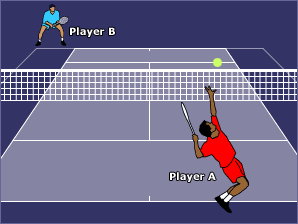An ongoing dialogue on HIV/AIDS, infectious diseases,
November 6th, 2013
SINGLE Study Underscores Waning of the Efavirenz Era — But Probably Just in the USA
 In today’s New England Journal of Medicine, the SINGLE study finally makes its appearance “in print.” (The study results were first presented over a year ago.) The highlights:
In today’s New England Journal of Medicine, the SINGLE study finally makes its appearance “in print.” (The study results were first presented over a year ago.) The highlights:
- SINGLE was a double-blind, randomized clinical trial comparing abacavir/lamivudine plus dolutegravir to tenofovir/FTC/efavirenz in 833 treatment-naive study subjects. That’s right, three different drugs in each arm — you don’t see that much in HIV clinical trials these days.
- At 48 weeks, 88% of the dolutegravir group and 81% of the efavirenz group had HIV RNA < 50, making the dolutegravir arm superior. CD4 response also significantly better.
- The difference between the two arms was driven by more study drug discontinuations in those receiving the EFV regimen; virologic responses were similar.
- There was no resistance detected among those with virologic failure on dolutegravir.
Setting aside the NRTIs for now, we must again note that this is the very first time anything has beaten an EFV-based regimen, and it’s not for lack of trying. Starting with its surprising defeat of indinavir way back in the 1990s, efavirenz has subsequently bested fosamprenavir, lopinavir/r, nevirapine, nelfinavir, and abacavir.
(And let’s not forget once-daily soft-gel saquinavir/r. That’s nine pills/day just for the saquinavir/ritonavir, yikes.)
The most any challenger could do was tie — see atazanavir/r, raltegravir, elvitegravir/cobicistat — or, in the case of rilpivirine, offset lesser antiviral activity with a better tolerability profile. In short, up until the SINGLE study, one could argue that EFV-based treatments — especially TDF/FTC/EFV — represented the gold standard against which all other regimens must compete.
Has that now changed? I think it has.
Note that these SINGLE study results come out just as other data and clinical experiences have less forcefully nudged efavirenz off its perch on top of the HIV treatment world. Want a single pill for HIV treatment? There are now two other options, TDF/FTC/rilpivirine and TDF/FTC/elvitegravir/cobicistat, both of which have significantly lower rates of CNS side effects and rash; abacavir/lamivudine/dolutegravir is on its way as another option.
Furthermore, those efavirenz CNS side effects may not be so benign — a study presented at this year’s IDWeek (disclosure: I’m a co-investigator) found that those randomized to efavirenz had twice as high a rate of suicidal ideation as in the non-efavirenz treatments. Yes, the absolute risk was low, but this is a much more serious adverse effect than the famous “vivid dreams” reported so frequently by those receiving efavirenz.
So what about the rest of the world? The World Health Organization Guidelines, updated just this summer, have this to say about initial regimens:
Once-daily regimens comprising a non-thymidine NRTI backbone (TDF + FTC or TDF + 3TC) and one NNRTI (EFV) are maintained as the preferred choices in adults, adolescents and children older than three years … TDF + 3TC (or FTC) + EFV as a fixed-dose combination is recommended as the preferred option to initiate ART
Which means we are far from seeing the end of the efavirenz era globally, where the drug is widely (and accurately) viewed as effective, inexpensive, and relatively well-tolerated. All good things.
Just not quite good enough anymore, given what’s out there as competition.
Your thoughts?


Dr. Sax, in the managed care world, do you foresee some system’s protocols starting patients on (soon to follow) generic Sustiva regimen(s) first while monitoring for side effects and or starting them on a Tivicay – Lamivudine – Abacavir (if HLA-B 5701 negative) regimen, which would only be 4 tablets (total) once daily? Also there’s been recent data contradicting the earlier studies (DAD) that showed a possible decreased efficacy of Epzicom backbone regimens in HVL as well as some evidence contradicting earlier cardiovascular (MI) data. Was there any mention of that in the studies with Tivicay. Last year the IAS made a few Epzicom regimens preferred again (with stipulations).
Matthew,
Cost certainly could play a role in what regimens providers, patients, and payors choose. Here’s a paper that my colleague Rochelle Walensky led that touches on these issues:
http://annals.org/article.aspx?articleid=1556848
Paul
Paul,
Thx again for a terrific review. I would like to point out that in the ROW, first NVP, then LOP/r for over ten years, and now EFV, even ATR, as good as they are antivirally, are not what keep patients on treatment. People are not offered options by their governments or treaters.
Even in the US and Europe, suicidal ideation should have been more front and center earlier. I applaud you for bringing it up now, but it has been on the “radar” from almost the beginning.
In many places, even in Europe, ATR will remain important not because it is the best, but because it is the most rational price-wise. While lots of treatments have come along since ATR’s approval, nothing has been able to maintain a decent price, which dictates what people are offered. Providers, of course, have their hands tied as well, but just because EFV (or ATR) has “proven” again and again to be OK, has anyone really asked the patients? Or been allowed to interact with what a patient would be most satisfied with?
Again, outstanding job.